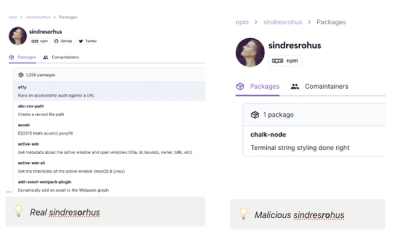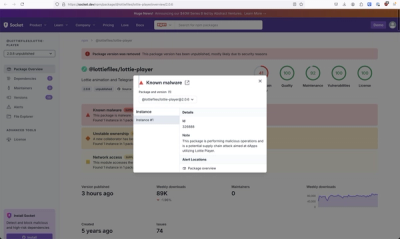Introduction

Library for aspect-oriented programming with JavaScript, which takes advantage of ECMAScript 2016 decorators syntax.
NOTE: if you are using aspect.js in a plain JavaScript project that uses @babel/plugin-proposal-decorators, you must set its legacy property to true until #72 is fixed.
See this migration note for more information.
A sample project using JavaScript with Node >=10.12.0 (or >=8.12.0) & Babel 7.x can be found at https://github.com/matthewadams/aspect.js-babel7-poc.
It's a good way to get going quickly with aspect.js in that environment.
For further reading on decorators, take a look at the spec.
Blog post, introduction to the AOP and the library could be found here.
Talk from AngularConnect.

Sample usage
import {beforeMethod, Advised, Metadata} from 'aspect.js';
class LoggerAspect {
@beforeMethod({
classNamePattern: /^Article/,
methodNamePattern: /^(get|set)/
})
invokeBeforeMethod(meta: Metadata) {
console.log(`Inside of the logger. Called ${meta.className}.${meta.method.name} with args: ${meta.method.args.join(', ')}.`);
}
}
class Article {
id: number;
title: string;
content: string;
}
@Advised({ bar: 42 })
class ArticleCollection {
articles: Article[] = [];
getArticle(id: number) {
console.log(`Getting article with id: ${id}.`);
return this.articles.filter(a => {
return a.id === id;
}).pop();
}
setArticle(article: Article) {
console.log(`Setting article with id: ${article.id}.`);
this.articles.push(article);
}
}
new ArticleCollection().getArticle(1);
In case you're using aspect.js in a browser environment the minifier may break the annotated code because of the performed mangling. In order to handle this problem you can use:
class LoggerAspect {
@beforeMethod({
classes: [ArticleCollection],
methods: [ArticleCollection.prototype.getArticle, ArticleCollection.prototype.setArticle]
})
invokeBeforeMethod(meta: Metadata) {
console.log(`Inside of the logger. Called ${meta.className}.${meta.method.name} with args: ${meta.method.args.join(', ')}.`);
}
}
class ArticleCollection {
getArticle(id: number) {...}
setArticle(article: Article) {...}
}
In this case you can omit the @Advised decorator.
This way, by explicitly listing the classes and methods which should be woven, you can prevent the unwanted effect of mangling.
Demo
git clone https://github.com/mgechev/aop.js --depth 1
npm install -g ts-node
ts-node demo/index.ts
API
The library offers the following combinations of advices and join points:
Method calls
beforeMethod(MethodSelector) - invoked before method callafterMethod(MethodSelector) - invoked after method callaroundMethod(MethodSelector) - invoked around method callonThrowOfMethod(MethodSelector) - invoked on throw of method callasyncOnThrowOfMethod(MethodSelector) - invoked on throw of async method call
Static method calls
beforeStaticMethod(MethodSelector) - invoked before static method callafterStaticMethod(MethodSelector) - invoked after static method callaroundStaticMethod(MethodSelector) - invoked around static method callonThrowOfStaticMethod(MethodSelector) - invoked on throw of static method callasyncOnThrowOfStaticMethod(MethodSelector) - invoked on throw of async static method call
Accessors
beforeSetter(PropertySelector) - invoked before setter callafterSetter(PropertySelector) - invoked after setter callaroundSetter(PropertySelector) - invoked around setter callonThrowOfSetter(PropertySelector) - invoked on throw of setter callasyncOnThrowOfSetter(PropertySelector) - invoked on throw of async setter callbeforeGetter(PropertySelector) - invoked before getter callafterGetter(PropertySelector) - invoked after getter callaroundGetter(PropertySelector) - invoked around getter callonThrowOfGetter(PropertySelector) - invoked on throw of getter callasyncOnThrowOfGetter(PropertySelector) - invoked on throw of async getter call
MethodSelector
export interface MethodSelector {
classNamePattern?: RegExp;
methodNamePattern?: RegExp;
classes?: Function[];
methods?: Function[];
}
PropertySelector
export interface PropertySelector {
classNamePattern?: RegExp;
propertyNamePattern?: RegExp;
classes?: Function[];
properties?: PropertyDescriptor[];
}
Metadata
export class Metadata {
public method: MethodMetadata;
public className: string;
public advisedMetadata: any;
}
MethodMetadata
export class MethodMetadata {
public proceed: boolean;
public name: string;
public args: any[];
public context: any;
public result: any;
public exception: any;
public invoke: (...args: any[]) => any;
}
Diagram
Here's a UML class diagram which shows the relations between the individual abstractions:

Roadmap
License
MIT





